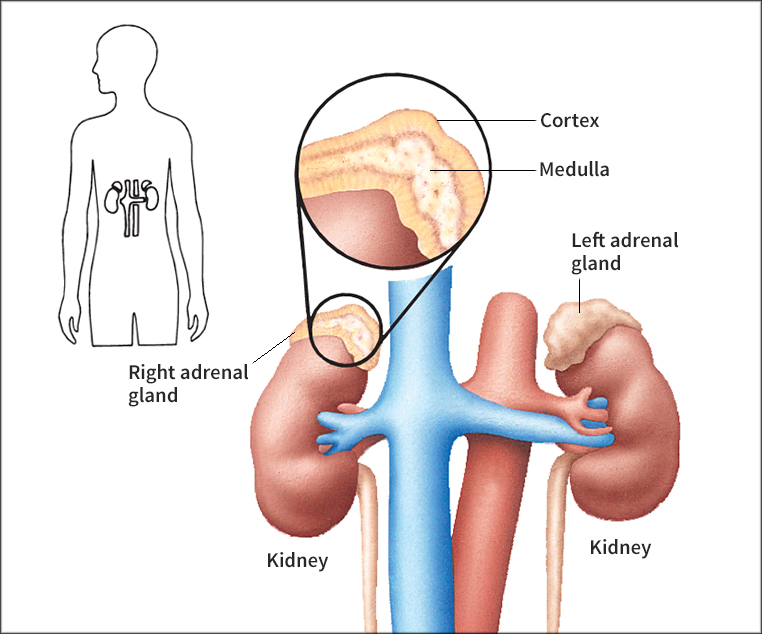Adrenal << uh DREE nuhl, >> gland, is a small, pyramid-shaped organ that secretes many important hormones. The body has two adrenal glands, one on top of each kidney. The adrenals, also called suprarenals, measure about 2 inches (5 centimeters) each in diameter. Each adrenal gland consists of a medulla (inner core) and a cortex (outer shell).

The adrenal medulla is controlled by the nervous system. Nerve signals stimulate the medulla to secrete epinephrine (also called adrenalin) and norepinephrine (also called noradrenalin) into the blood. These hormones help the body adjust to sudden stress. For example, they increase the rate and strength of the heartbeat, raise the blood pressure, and speed up the body’s energy-producing processes.
The adrenal cortex secretes many hormones, some of which are essential to life. These hormones, called corticosteroids, belong to three main groups–(1) glucocorticoids, (2) mineralocorticoids, and (3) sex hormones.
Glucocorticoids regulate the use of digested foods and help the body adapt to stress. The most important glucocorticoid is cortisol, also called hydrocortisone. The secretion of the glucocorticoids is controlled by adrenocorticotropic hormone (ACTH). ACTH is produced by the pituitary gland, a small organ near the base of the brain. Physicians use cortisol, and synthetic compounds that resemble it, to control inflammation.
Mineralocorticoids regulate the excretion of sodium and potassium by the kidneys. Aldosterone is the most important mineralocorticoid. Renin, a hormone secreted by the kidneys, controls the production of aldosterone. Overproduction of aldosterone causes high blood pressure in some people.
The adrenal glands produce only small amounts of sex hormones, chiefly the male sex hormones called androgens. The adrenal androgens help regulate the development of pubic hair and other early sexual characteristics in both males and females during the period just prior to puberty.
